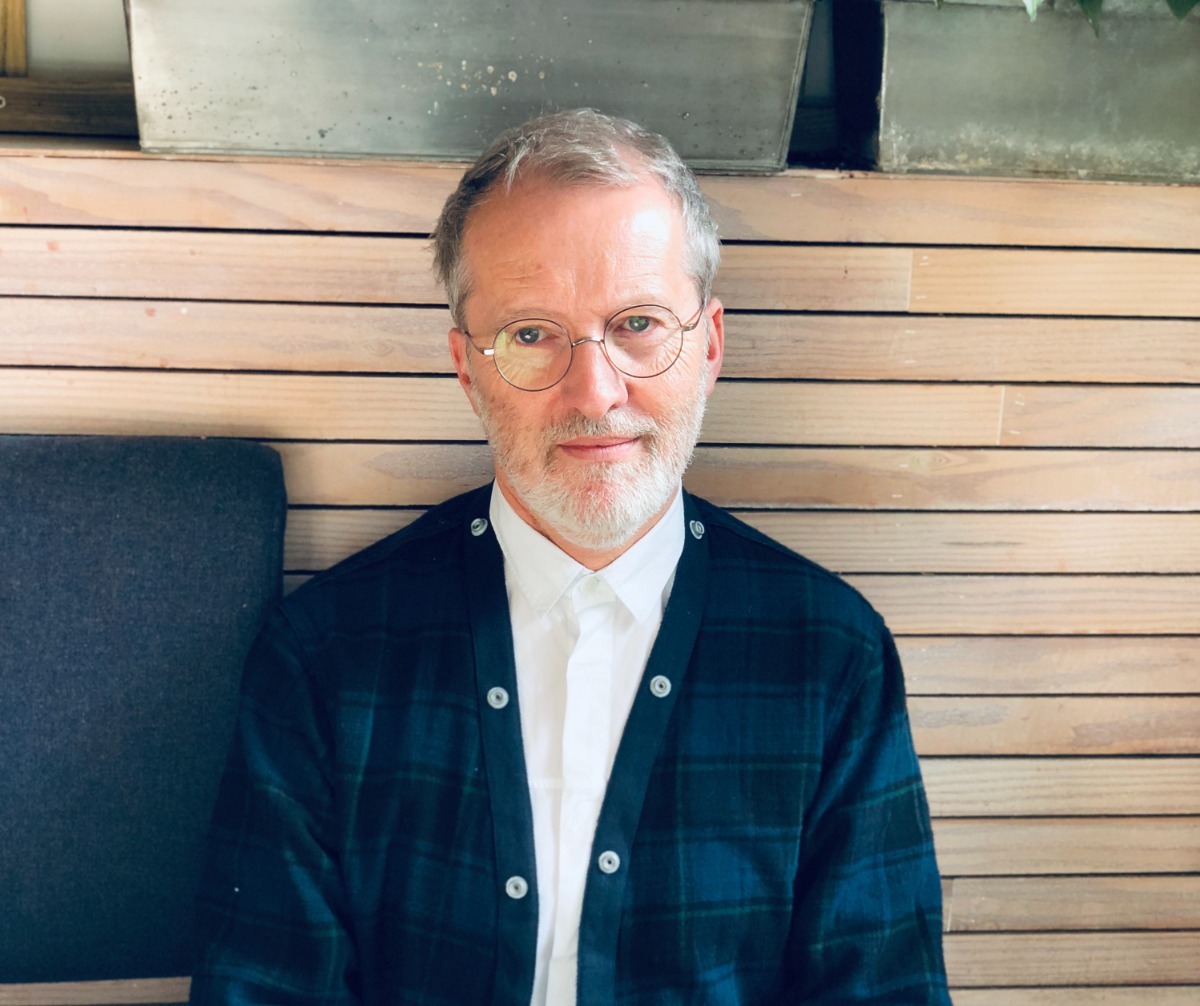
Planning better scenarios
An interview with Simon Jordan, Senior Principal Co-founder of London’s Jump Studios
In mid-March the London and Riga Chapters of the Society for Experimental Design (SEGD), in cooperation with H2E design studio, held the Design & City remote conference. One of the featured speakers was Simon Jordan, Senior Principal Co-founder of London’s Jump Studios, a brand & design studio focused on challenging conventions and redefining boundaries throughout the built environment. Founded in 2001, the studio specialises in the design of retail and office spaces, exhibitions, various pop-up platforms, restaurants and bars, as well as brand experience. Jump Studios’ client portfolio includes the likes of Nike, Levi’s, Marks&Spencer, Red Bull, Saatchi & Saatchi, Google, and Bloomberg.
In his presentation, Jordan touched upon the topic of work environment design and architecture in the current situation that we are experiencing, but his main focus that day was on the unknown – the kind of issues we could be facing in the future, and not all of them necessarily having to do with new epidemiological challenges. In our conversation that took place after the event, Jordan repeatedly emphasised how important it is for the design industry to be prepared for the unknown – and perhaps even more difficult scenarios than the one that Covid-19 has thrown our way.
At the SEGD London-Riga Chapter remote conference, the discussion was largely on the challenges that designers may have to face in an uncertain future. Design is always associated with looking into the future – but what if we look back? What are some design lessons that we can learn from having dealt with previous disasters in history?
If we think about the post-World War II consensus, certainly in liberal, Western societies, I think all sort of institutions, all sort of welfare programmes that grew out of that – they were all reactions to what those societies, blighted by war, had undergone. But unfortunately it feels to me that as we grow further and further away from that catastrophe, we start to forget why those institutions and initiatives came about, and how fantastically successfully they worked – less about competition and more about collaboration, fairness, social mobility etc., the idea of finding ways in which people can come together, either as communities, societies or nations. This has probably been lost just through the distance of time, and I think it’s a lesson we could revisit. Now we’re seeing that the last generation that physically experienced the war is gradually passing away, and we are losing sight of the lessons we were provided with.
Post-war consensus meant co-operation on many levels. In thinking about designing the post-Covid public space, what is happening in the collaborative fields shared by architects, designers, public health experts, engineers, anthropologists, etc.?
I don’t think enough, to be honest with you. I think that’s the next thing, the next model – to start thinking about how we can move or shift things away from the zero-sum game which is the predominant kind of agent. The profit-driven organisation is at the centre of everybody’s lives, at the centre of every community’s or society’s life. We’ve moved from market economies to market societies. When you think about marketplaces, it’s really about winners and losers, about competition. But the emphasis should shift away from competition to collaboration. So, why can’t companies that would otherwise be seen as competitors actually come together to try to solve real-world problems? Rather than zero sum games with one winner and many losers, how about collaboration, working together, and sharing learning outcomes? And that takes quite a lot of thinking because it’s about restructuring – not just organisations, but the way we see the role of organisations, the way we organise things through marketplaces. It’s a massive challenge, but I don’t think we’re going to get to a better place unless we start to think about these kinds of radical shifts.
The New European Bauhaus initiative is about building bridges between the world of science and technology and the world of art and culture, as well as encouraging social inclusion, in an effort to allow for design to find solutions for everyday problems. What is your general commentary on the Bauhaus initiative?
It touches back a little bit on my point about shifting from competition to collaboration. I think the idea of breaking down barriers between different silos is where real innovation will come from. And in a sense, designers per se don’t necessarily own “design”, because the design is just a process through which we manage the man-made world. So, effectively, if we’re looking at the man-made world afresh, from first principles, we see that we want to reset many aspects of our lives: how societies are reset in the interests of fairness, equality, sustainability, etc., how we eat, how we travel, how we work, how we play… If we started again, we’d do things differently, in the context of “now”.
And, of course, any possible sector that you can think of needs to be given the chance to attempt to address the problems that we’re being confronted with now. But we also need to go beyond that, and not just by thinking about how to make a world pandemic-free. The issue for me is a point I made before – we need to think less about designing for a perceived future, and think about designing for the unknown... The next global challenge will be something completely different. It won’t necessarily be a pandemic. It’s the black swan theory – it’s just stuff that we don’t know. So, we have to think about how to build resilience, flex and anticipation and build it through coming together, through collaboration.
Tottenham Hotspur Stadium interiors, London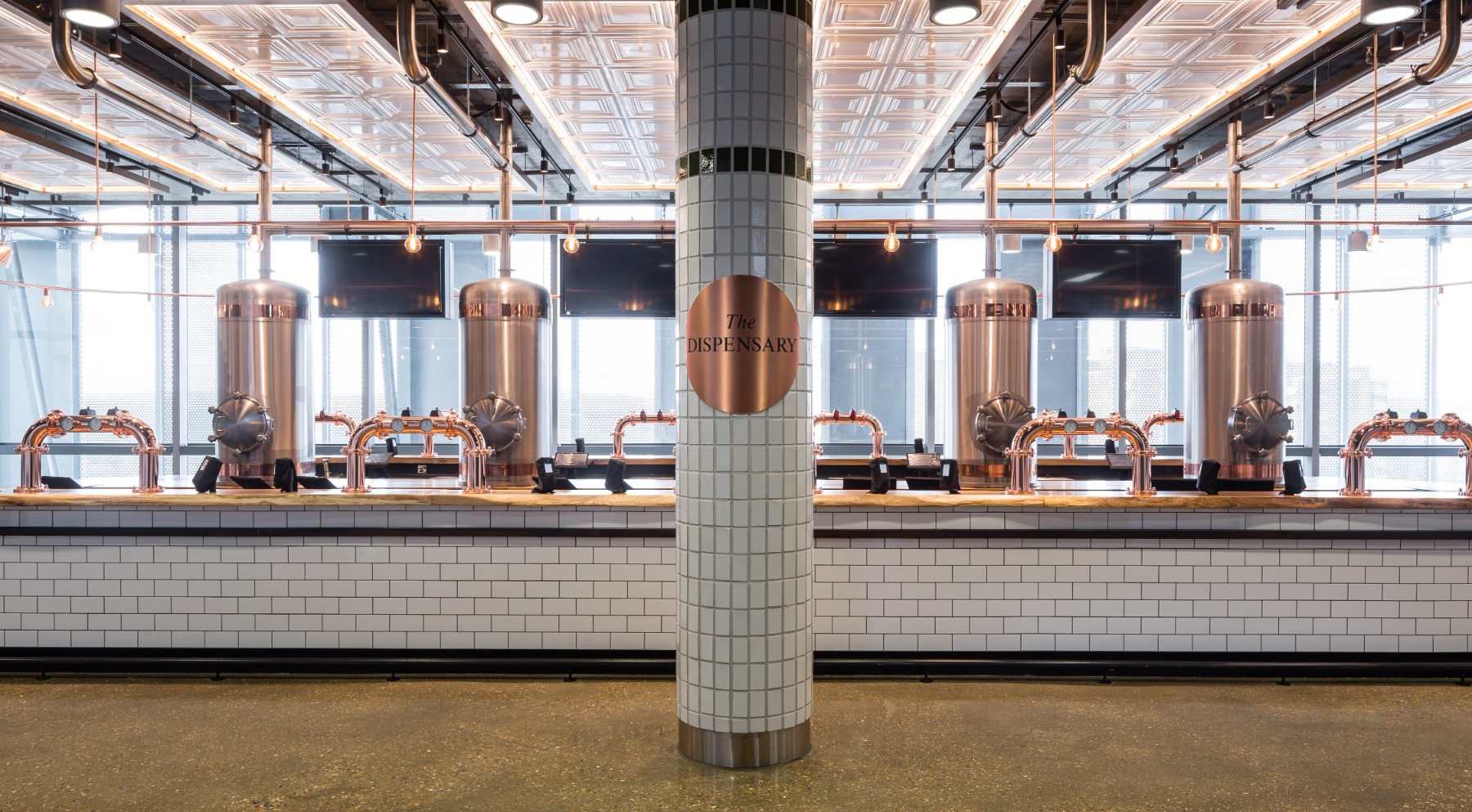
The European Union also wants to become climate-neutral by 2050. Are you optimistic or realistic regarding this? What are the biggest challenges for the design industry towards a carbon-free, climate-neutral environment?
It’s a big challenge. If I think realistically, I would suggest that it would be very difficult to achieve the targets that have been set. I think designers probably need to decouple themselves from their clients’ objectives by 100 %! Particularly in architecture, which is a major contributor to climate change. That means to take the higher ground, to take a moral stance that is actionable and that isn’t just a kind of platitude. It isn’t just getting together behind some campaign idea – it is thinking very hard about who they work with and how they can advise and lead their clients. And some of that, I think, will be just research-based, but what we really need to do is delve into our expertise in materials, construction methodologies, etc. To think how can we start to collaborate with sectors that sit beyond the conventional.
Tottenham Hotspur Stadium interiors, London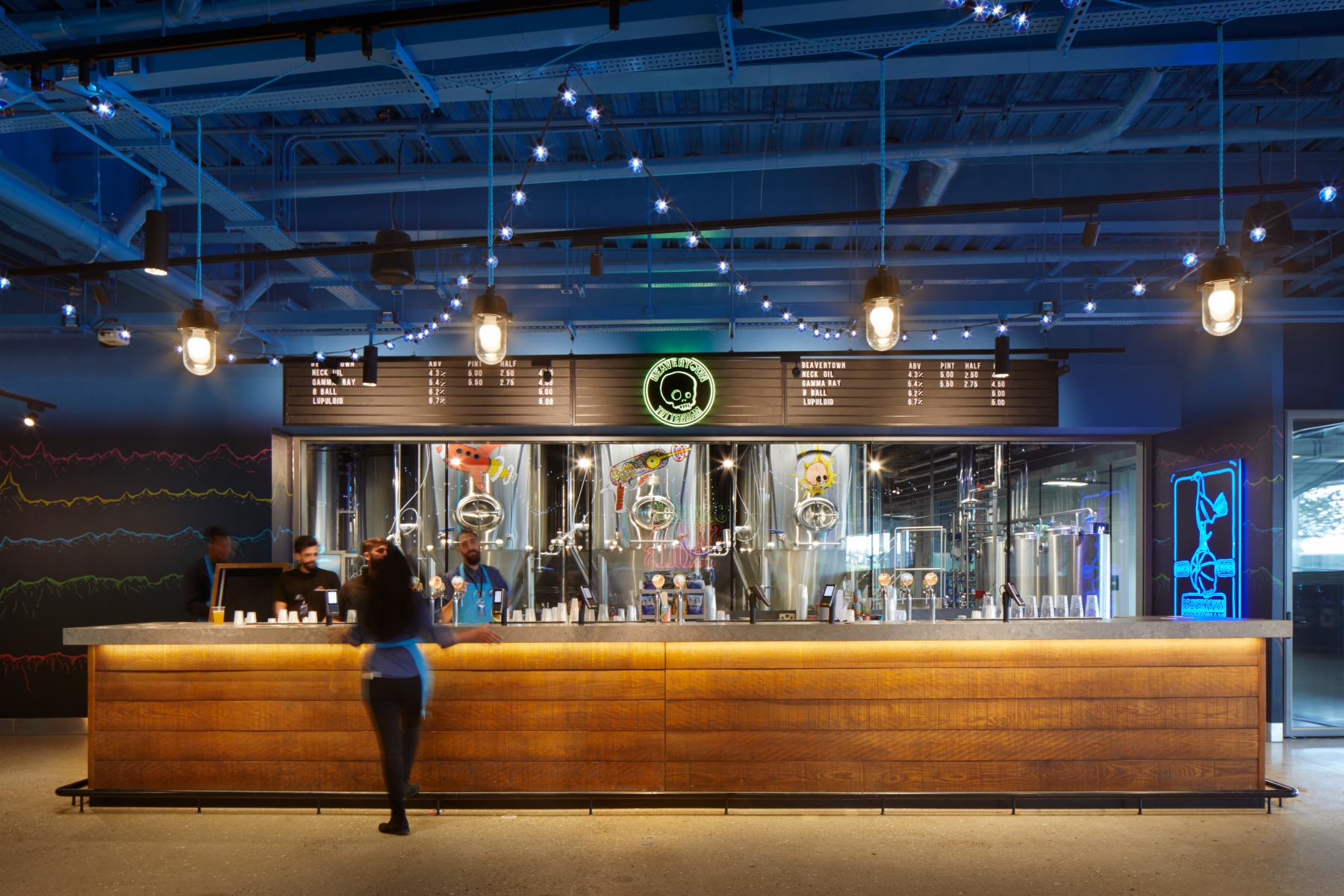
Talking about materials and methods, and turning our focus to design guidelines for a safe post-Covid transition, could you give some examples from the very practical and tangible side, e.g. surfaces, infection-resistant materials, ventilation systems, navigation systems, etc.? What is new in the arsenal?
Nothing is necessarily new. I think it’s really about understanding the range of materials or systems available that can be quickly deployed, and that to some degree should have already been there in the first place. The biggest issue really is air circulation. That’s where the science has taken us. And I guess, from a pandemic perspective, we’re still quite early in the game in terms of understanding its behaviour. A virus’s behaviour is a bit of a runaway train because it is shifting, morphing and changing all the time. But ostensibly science suggests that the biggest risk is the airborne nature of the virus. In the future, the idea of how we deal with air circulation is going to be critical, and we have the technology to do that. The thing is to think about technology with sustainability.
History is useful here, we can revisit the buildings that effectively were delivered as part of the Industrial Revolution. I think those are worth looking at. They were naturally ventilated. To cool or heat spaces, you could just open or close the windows, which had decent floor-to-ceiling heights because they were always about bringing in machinery and allowing it to “breathe”. So, if you look at the metrics of naturally ventilated buildings, I think there’s a lot we can learn from them. That speaks to the idea of repurposing and reusing buildings, being a little bit more sympathetic to the building stock that’s already in existence and thinking a bit harder about how we can adapt and repurpose them for contemporary use.
Tottenham Hotspur Stadium interiors, London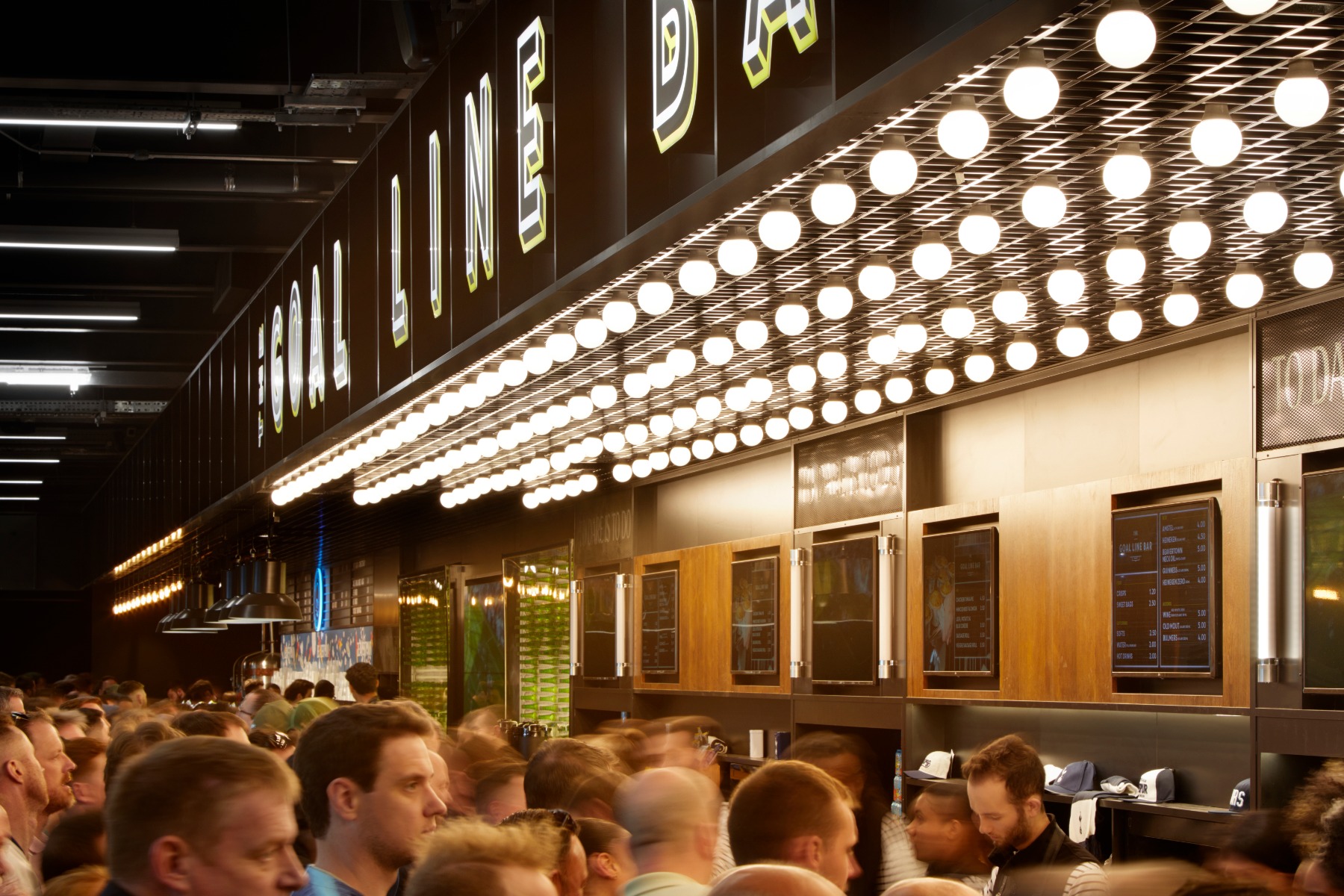
How would one or another approach impact costs? Will design become more expensive?
It depends on how you price things – are you thinking about the economy, or are you thinking in terms of sustainability and carbon offset? There are very interesting series of buildings that have shown up recently in East Hackney (in London) that have a sort of social purpose. Everything in those buildings has effectively been built like a machine and is effectively demountable. Sustainability is built into them from the get-go. Now, as I understand, that increased the cost by 20%. But if you think about the cost over its life, which is now not just 10, 50, or 100 years – it’s as long as you can keep thinking of uses for the building – it’ll pay for itself many times over. Capital costs might be a little bit higher, but I think that the return-over-time contribution that you’re getting back in the form of a better and more healthy society is where the value comes from. And again, I suppose that’s really about thinking about what cost actually is. Is it just about the financial cost? Or is there another metric we can look at as well?
Red Bull’s new HQ, London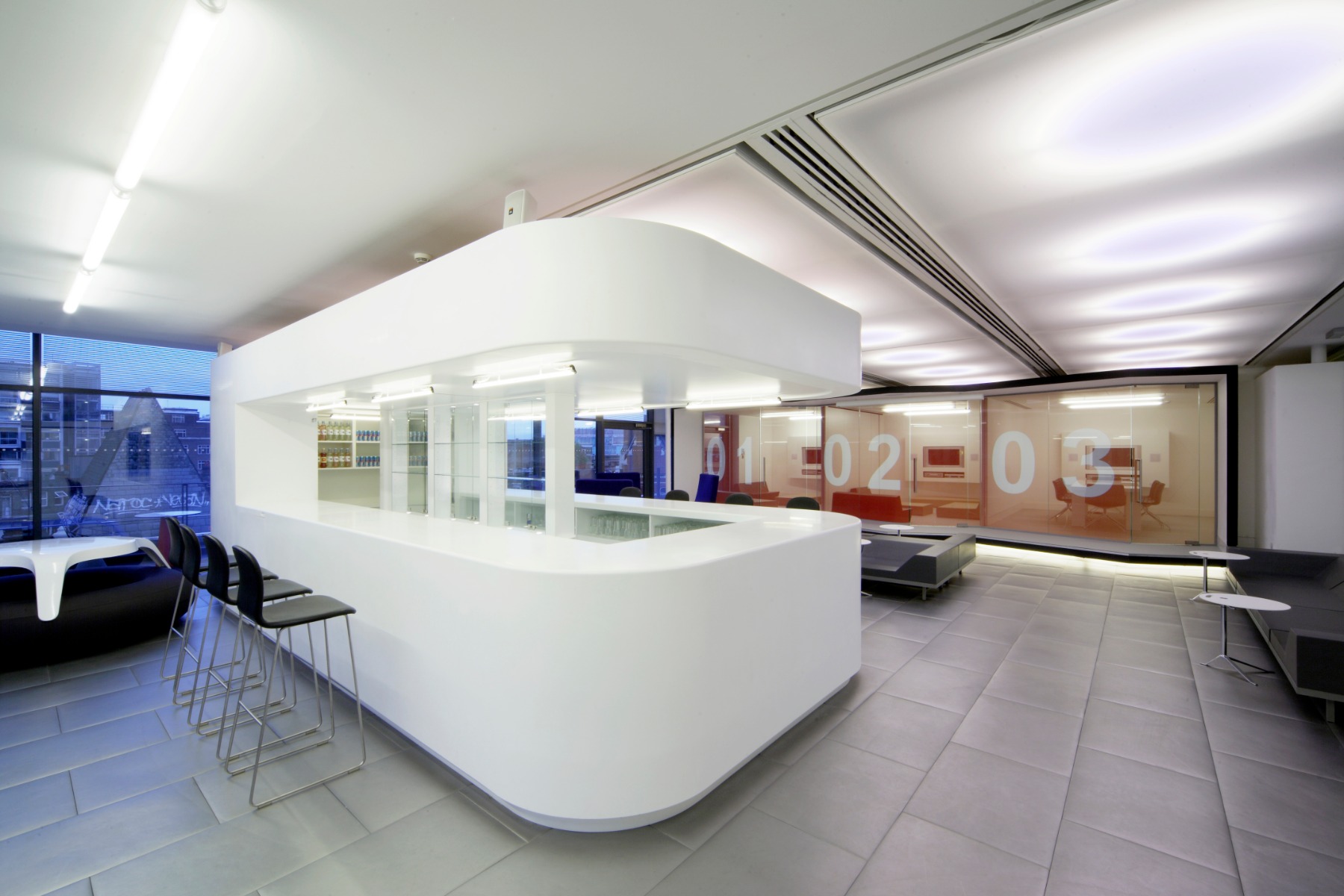
What is your take on the future of the open-plan office? Will Covid-19 kill the open office?
That’s a very good question. I think Covid-19 will kill the office as we know it. What we need to do is almost dissolve the office as we know it! We need to put the typical office tropes behind us and think about a different typology. We always end up in these kinds of binary arguments when it comes to things like the workplace – whether it’s open-plan or cellular, whether they’re spaces that are designed for introverts or extroverts, etc. And in a sense, we’re just narrowing the question down a little bit too much. I think we still apply modernist principles that don’t hold true – we talked about the Bauhaus earlier – Bauhaus is a part of a system of thinking, part of a philosophy that truly believed that you could find universal solutions to everything. But the world is way more nuanced and way more complex than that. There is no universal solution for everything. So, if we think about the open-plan versus the cellular, I think maybe that’s not the question. The question business should be asking and designers addressing is – How do I create and maintain a happy, healthy and productive workforce? And if we can rewrite the rules now, if we can think about a plausible future, then we need to think about what has changed today and how can we use that. It is thinking about planning better scenarios.
Red Bull’s new HQ, London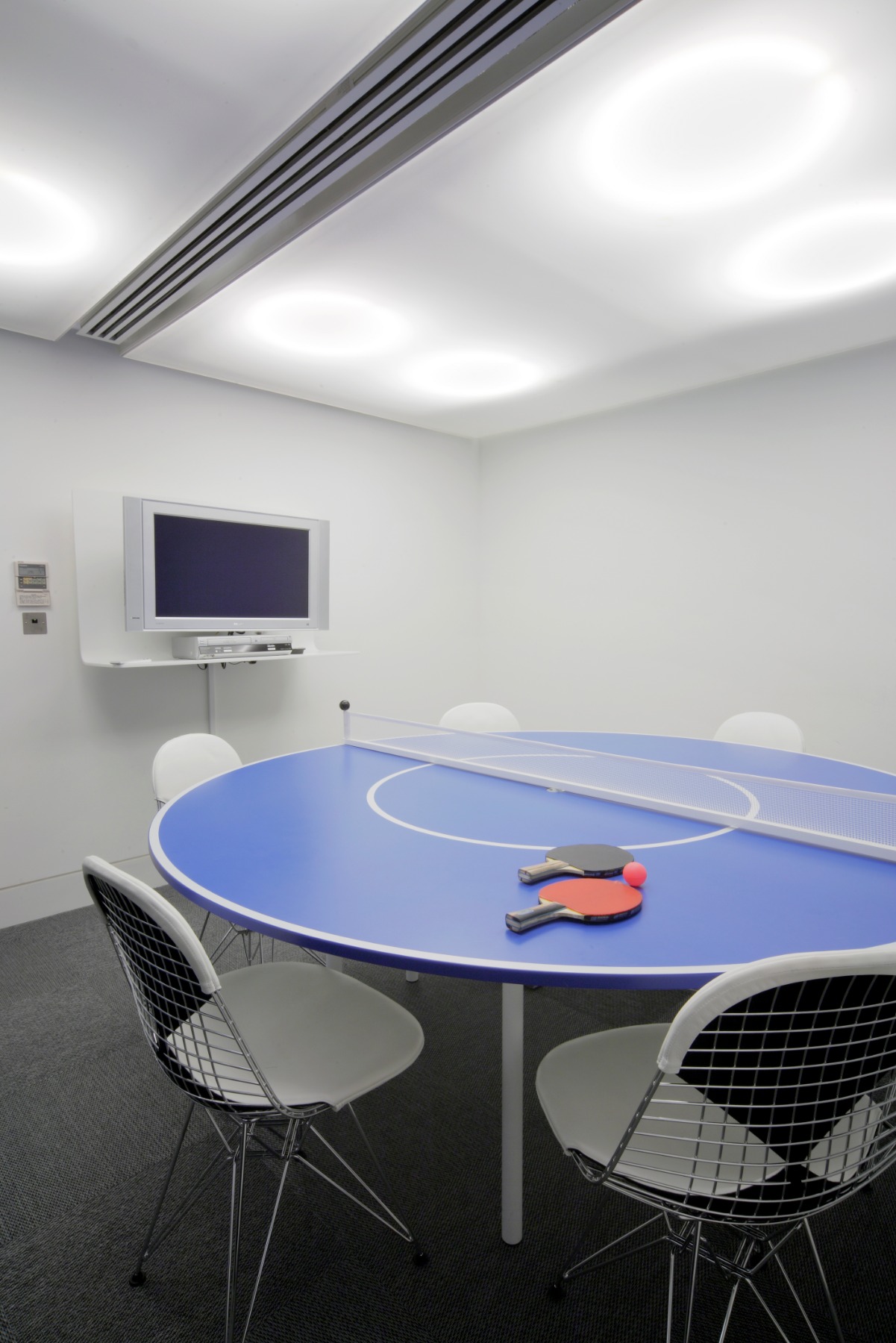
This working from home experiment is working. Regardless of what people say about a return to the office, there will be plenty of people that will have adapted or adopted a new set of behaviours. They will be comfortable working from home. They’ll be able to better manage that kind of work-life balance. Yes, there are those for whom working from home has been a challenge – say, a young family with children trying to balance homeschooling with work, or a young person in a house or flat-share fighting for laptop space in the kitchen. So, the answer really is “choice”. The answer is to allow people agency over where, when and how they work. And then we can start to build a different picture as to what the office itself might look like as a destination. Is it a place that becomes a sanctuary from home? Is it somewhere where you can get away to so you can concentrate? Or is it a space where people come together to collaborate? Is it where young people gravitate towards in order to pick up on what might be described as “intangible capital”? Is it a space where people can go to learn? Is it a place that orientates towards higher value activities for the business? All of those things start to bring some kind of shape to what the workplace experience could be – a place to learn, a place to socialize, a place to grow, a place to build identity. With increasingly distributed work, we just need to recast the role the office takes.
Red Bull’s new HQ, London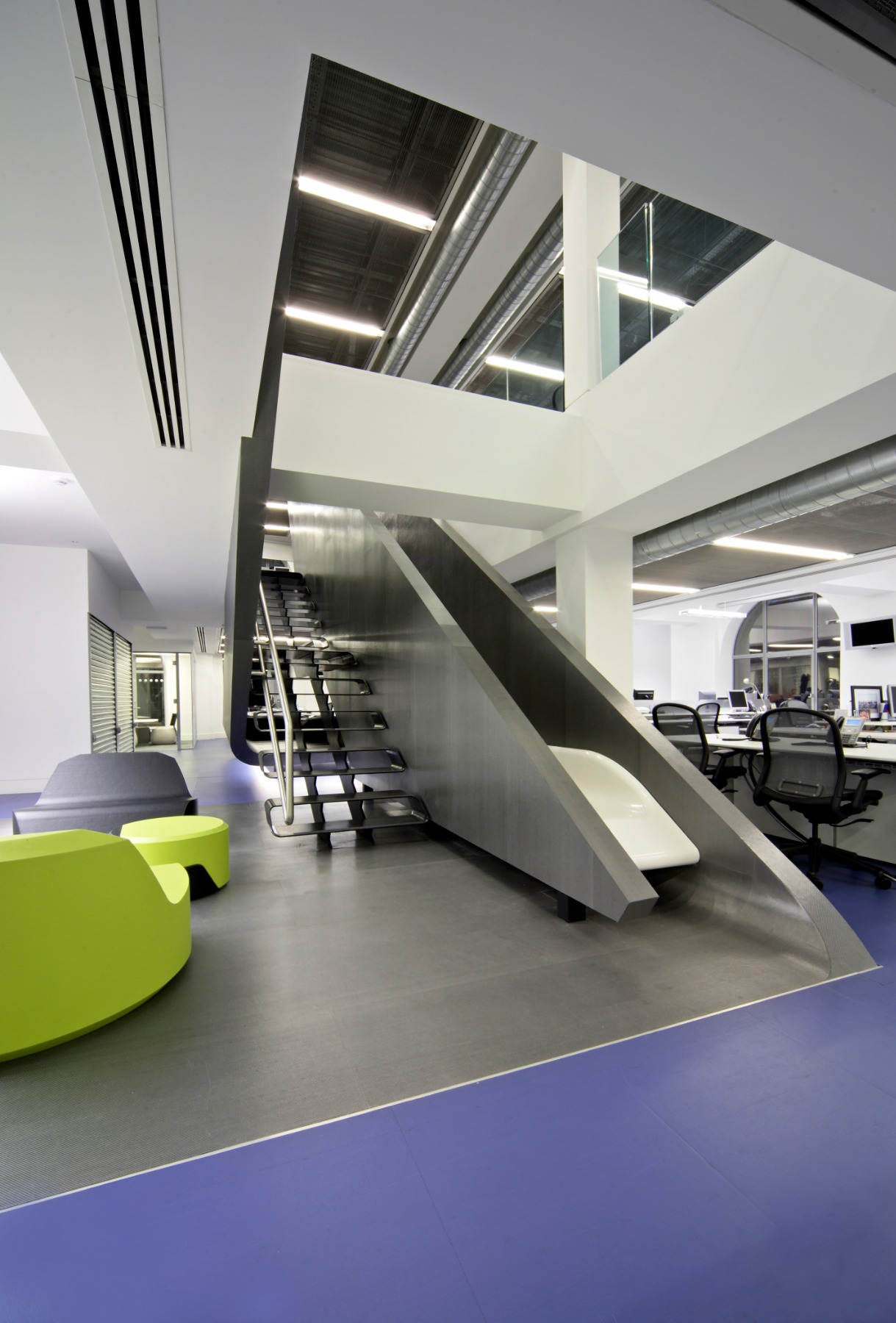
It is all about the programme of the space.
Exactly. But having said that, I still think the workplace is important. I think it’s not as if the workplace has died. I think our sense of the office probably has, but the workplace, for me, is somewhere where we mediate relationships and identity. Identity is something that as a studio we’ve always been quite fascinated by, almost as a material to work with. So, if you think of organisations – whether they’re obvious “brands”, whether they are a consumer-facing brand, or whether they are a tech company that doesn’t really see themselves as a brand in the traditional sense (e.g. Google, Facebook, Uber, etc. – they see themselves more as utilities), they will still have an identity.
Through everything they do, people will form a perception; they will build a picture in their minds as to who and what the business is, what it represents – so an identity is formed.
And people gravitate towards those companies with an identity that resonates with them. And the workplace becomes one aspect of that identity. In a sense then, it’s not just about the company, but about the individual’s identity as well. The workplace is where you go to shape your identity – who and what am I in the world? And so the physical workplace becomes a site where these relationships around identity are mediated. It can’t happen meaningfully in virtual spaces alone.
Levi’s stand for the fashion fair Bread & Butter, Barcelona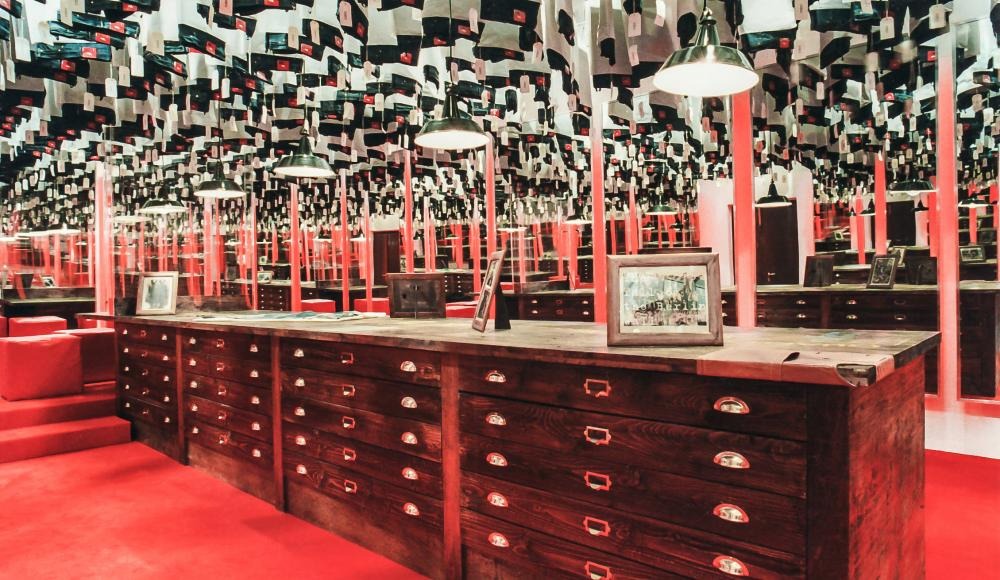
What are three projects that you could highlight as embodying the real essence of Jump Studios’ philosophy?
One of them could be the Levi’s project. It’s one that I always go back to because it brought to life a really interesting narrative. That story is predicated on a “celebration of craftsmanship”. Here we needed to think about how could we take this story of craftsmanship as our creative platform and then extrapolate a space around that.
The second one I find compelling deals with an issue that we’re always grappling with - how can we use architecture to frame, moderate or mediate desired behaviours? With Red Bull, we effectively were using the architecture to encourage a set of behaviours. We had to think – how can we get people moving through this building quickly, interacting and collaborating. And that was all about dropping a slide through the centre of the building, while the meeting and social spaces were located on the top floor. We created what we described as a “compressed experience” – connecting the experience of the space to the promise of the brand. We built a very energised and dynamic space, which in itself speaks to the brand. It’s exactly what the brand is – energising and about movement.
And then the third would be one of our first collaborations with Populous [Jump Studios merged with Populous in 2015 – Ed.], who specialised in sports and entertainment venues. That was the project for Tottenham Hotspur Football Club. Here we needed to rethink what the fan experience could be in a stadium that could be more generous and more democratic in the way it goes about hosting fans. I think that was a really interesting project for us to get involved in.
Levi’s stand for the fashion fair Bread & Butter, Barcelona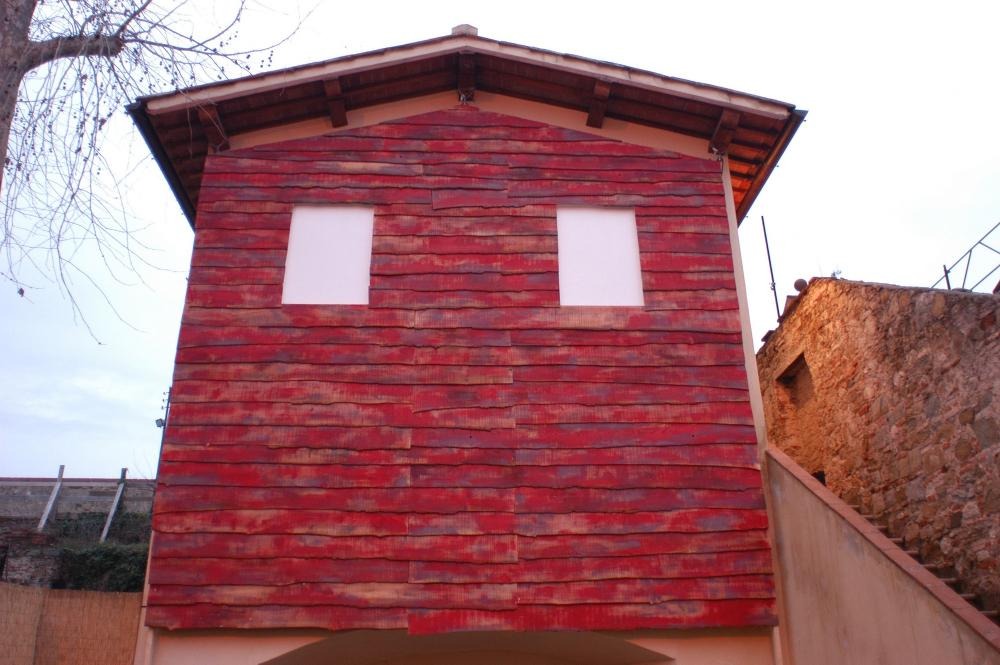
In the remote London-Riga Chapter conference, you talked about brand experience and how to build meaningful experiences. Can you sum up the main points of your approach for breaking from the mundane and reaching escapism in brand design?
I guess brand and identity isn’t really about aesthetics. I think humans – we as a species – find ways to navigate worlds by seeking and responding to stories. And that effectively is what a brand is. We use brands effectively as signals and meanings. You know, if you think about a company, it is essentially an organisation that is made up of people. Here the brand becomes a kind of focal point for shared beliefs. And I think if you look out of the organisation, communities become a focal point for shared beliefs. So, for me, it’s about thinking of design less through the lens of the brand and more through the lens of identity and storytelling. I think if we think about it from a storytelling perspective, that allows us to think about richer experiences. For example, journey mapping – when somebody effectively experiences a building or space; it unfolds kind of like a narrative or journey. It’s the moments when designers are fantastic at capturing and elevating, thinking intangible ideas or abstract thoughts, and grounding them. That’s sort of what I mean about brand and experience design. We can use a scriptwriter to think about buildings. Write them as a script, as a story!
My last question is about how generation gaps affect the design industry. What are the challenges designers meet when designing for younger generations, for example, Gen Z, which is sometimes defined as “the young and mobile population”? How do you latch on to their interests, attitudes, habits and practices? Sometimes it seems like they are somewhere else than those who are actually creating design output.
There is an issue I find with this overriding mantra for business, you know the one – “you need a compelling purpose”. It feels to me that from a societal point of view, or even from a species point of view, we really have to think about what our purpose is in general. So, it feels to me that that’s an unanswerable question. At times like this, the right question to ask would be: What is our purpose as a species? How should our societies be organised? Or, thinking holistically – what kind of society do we need to construct and what’s the basis of that kind of society? How do we want our societies to be organised to benefit all generations? And not just thinking about what kind of values the younger generation might have.